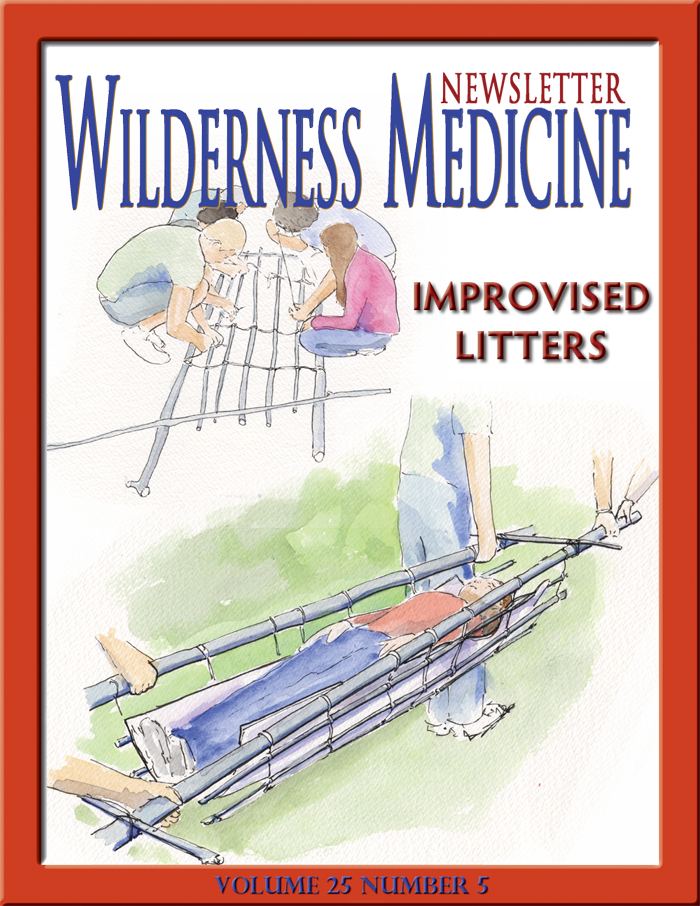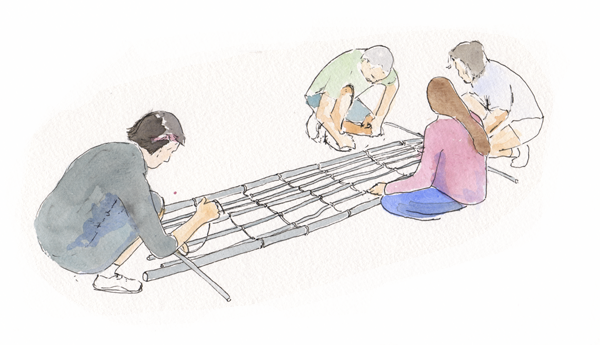IMPROVISED LITTERS

ISSN-1059-6518
By Frank Hubbell, DO
Illustrations by T.B.R. Walsh
While hiking with a small group in a remote region of the Kamchatka Peninsula in Russia, one of the team members slipped on a wet rock crossing a stream and twisted their knee. The resulting injury was an anterior cruciate ligament tear, a medial collateral ligament tear, and a partially torn patella tendon. As a result they were unable to weight bear to walk and had to be carried out. They did have Russian guides with them, but they did not have the ability to call out for help and if they had, there wasn’t any help available. They were on their own.
The real questions are not how to build a litter, but why and when would you want to? Why would you want to take the time to build an improvised litter? Building a litter takes time, both in gathering the materials and the actual construction.
Most of the time you and your patient are much better off to spend the energy to build and create a really good bivouac and stay put, letting help come to you. However, you may find yourself in a part of the world where help is simply not available, and you are on your own.
You can also find yourself in a situation where time is of the essence. Your patient may have critical life-threatening injuries, and you have to evacuate ASAP. In this case you will have sent others to get help, but, in the meantime, you may want to start in the direction of rescue to save precious time.
Another problem is the number of litter carriers that you might need. Is your team big enough, or do you have access to enough people who are willing to help carry the litter to evacuate your patient.
Knowing the best ways to improvise a litter is a valuable skill, but rarely needed. Your priority should be in knowing the best way to stay put and stay safe while you wait for help to arrive. However, in the event that the skill is needed, the following information will be useful.

